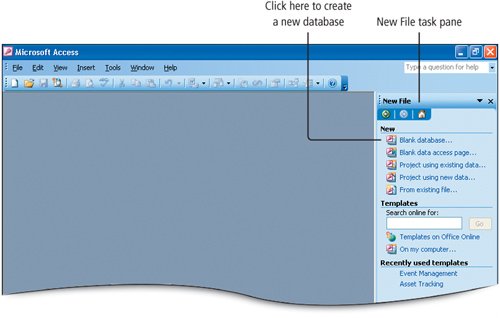Objective 3. Create a New Database
Plan your database on paper first. Determine what it is you want to keep track of and how you think the tables and their fields should be laid out. A good way to determine the layout of the tables is to ask yourself what questions you want the database to answer.
In this project, the purpose of the database is to keep track of the donations collected by student club members for the annual charity fundraiser. The questions to be answered include: Who made the donations? How much was donated by each donor? Has the pledged donation been collected? Because there is competition among the student clubs to see which club raises the most money, the database should also be able to answer these questions: What student collected which donation? To what club does the student who collected a donation belong? Which club collected the most money?
Activity 1.9. Creating a New Database
In this activity you will create a new database. There are two methods to create a new Access database: create a new database using a wizarda tool that walks you step by step through a process, or create a new blank databasewhich is more flexible because you can add each object separately.
Regardless of which method you use, you must name and save the database before you can create any objects. Think of an Access database file as a container that stores the database objectsthe tables, queries, forms, reports, and so onthat you create and add to the database.
More Knowledge: Versions of Access
Understanding File Formats
To share data with computers that use different data management software, Access uses file formats that comply with international standardsstandards that include storage for music and languages like Japanese that use pictographs instead of letters. Newer versions of Access recognize older file formats, but older versions of Access do not recognize newer formats. Files that are not recognized by earlier versions of the same software are not backwardly compatible. Go to the Microsoft Web site to find conversion programs. The Access 2000 format is suitable for most uses where the text is written in English; this format is the default format used in Access 2003.
The default file format for your computer may be set to Access 2000 or to Access 2002 and 2003. This affects the format of new Access files that you create. The default file format can be changed in the Options dialog box on the Advanced tab. To learn more about Access file formats, in the Type a question for help box, type converting Access files. In this book, all of the files provided are created using the Access 2000 file format to provide maximum flexibility.

